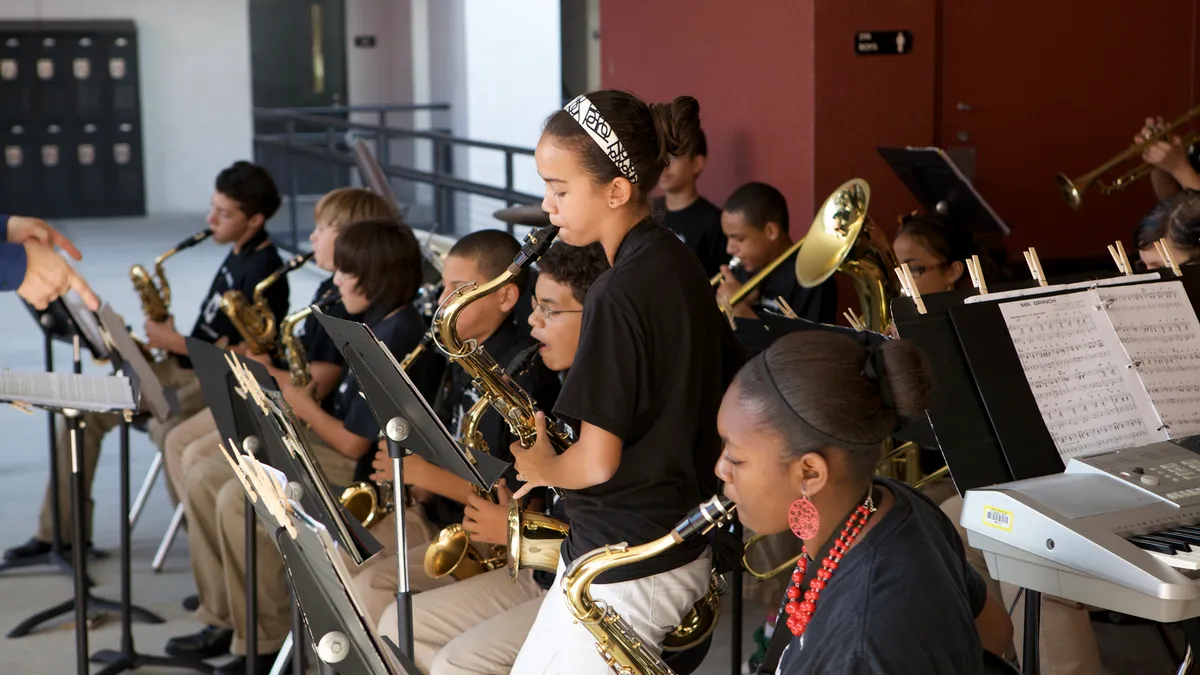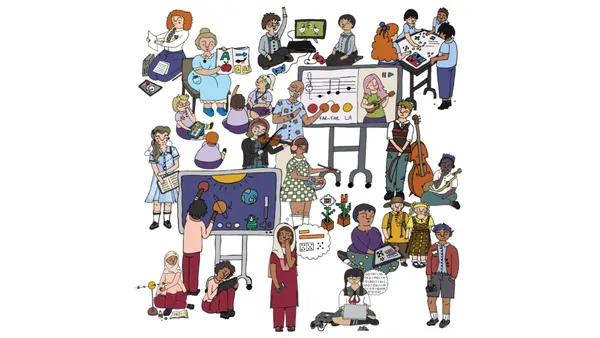Dive Brief:
-
Despite high levels of poverty in the district, David Douglas High School in Portland, Oregon, is among those where leaders ensure all interested students have the opportunity to play in the band if they choose to do so, according to The Hechinger Report.
-
David Douglas School District is one of 623 districts honored with the Best Communities for Music Education award, despite more than half of its students qualifying for free- or reduced-price lunches. Districts across the nation use this coveted award to urge school boards to keep music programs.
-
Similarly invested in music education is San Antonio Independent School District, where the school board upped its fine arts budget to $2.7 million for the 2018-19 and 2019-20 school years. Six months after the board’s decision, the district also won the Best Communities for Music Education award.
Dive Insight:
While fine arts is typically not considered a graduation requirement, music programs are in more schools today than 20 years ago, according to two reports by the U.S. Department of Education. Most in the U.S. have music programs, including 90% of those serving low-income populations and 96% in higher-income areas.
While music education was among subjects that tended to fall by the wayside amid increased focus in standardized testing results, there is a movement back toward educating the whole child, with music a key part of the arts equation.
Salt Lake City School District, for example, is among districts prioritizing music and arts programming, especially in Title I schools. Since these schools often have more hours in the day due to the need for additional instruction, SLCSD is able to build in enrichment programs that focus on a broader range of subjects.
Musical instruments are expensive, however, which can sometimes make offering music programs (especially band) difficult for districts with tight budgets or limited resources. Data suggests the effort to do so — which may require partnerships within the local community or with national arts and music organizations — pays off through graduation rates and test scores.
Schools offering music programs have a 90.2% graduation rate and 93.3% attendance rate, compared to a 72.9% graduation rate and 84.9% attendance rate in those that don’t offer music, according to research by the National Association of Music Merchants (NAMM) Foundation.













